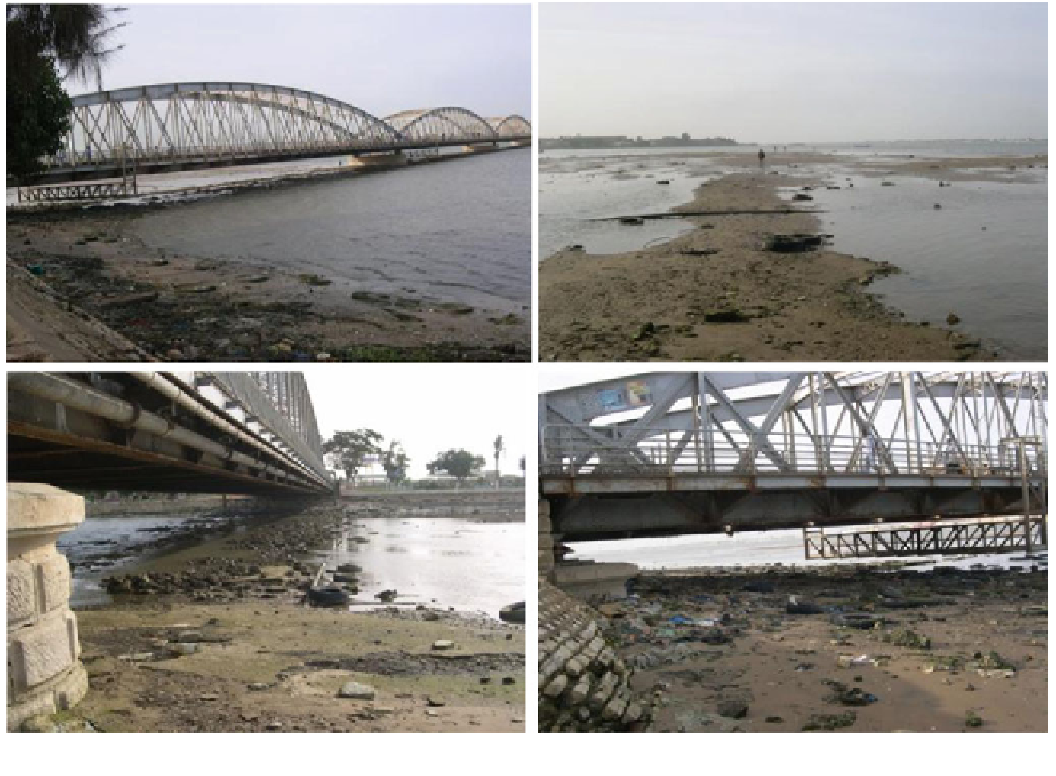Environmental Engineering Reference
In-Depth Information
Photo 3
Withdrawal of the Senegal river at low tide at the Faidherbe bridge (Pictures from Kane A., December 2003)
Salinization of Land and Water
traditionally known in this area. This new situation also
affects the management of the Diama dam whose function
has changed from an anti-salt barrier to a storage dam.
Indeed, the average water level at Diama has increased from
1.50 m in 1992 to 1.75 m in 1995, 1.90 m in 1997, 2.0 m in
1999 and 2.10 m since 2002. The aim of this increase in
water level is to satisfy the increasing demand for agricul-
tural water (Duvail
2001
). This also contributes to the
increasing water levels in the estuary, which periodically
receives freshwater discharged by the Diama dam.
The current estuarine hydrodynamics is strongly depen-
dent on the constraints of management of Diama which
requires periodic opening of the floodgates to regulate the
levels upstream. Indeed, the operating rules of Diama
require the energy of dissipation not to exceed 1,000 m
3
s
-1
under a 1 m fall (Coyne and Bellier Sogreah
1987
). But
according to a new study, following the increase of the tidal
estuary, the problems of energy dissipation no longer arise
since this energy could be fifteen times greater without any
consequence for the dam.
Salinization of land and water has always represented a
major challenge for socioeconomic development in the
lower estuary of the Senegal River, especially the region of
Gandiolais, in line with the natural region of Niayes.
The digging of the drainage channel brought the estuary
to the sea, causing an increase in the salinization of
groundwater and surface water. The effects of ocean
dynamics, which now dominates the river, are now being
felt throughout the lower estuary and almost throughout the
year. Containment of the estuary between the breach and
the Diama dam contributes to the worsening of the situation.
Accordingly to the opinion of the Gandiolais local people,
salinity is increasing exponentially and is now reaching key
areas hitherto spared. The river salinity data in St. Louis
show a sharp contrast between before and after the con-
struction of the Diama dam and after the opening of the
breach. Salinity levels are much lower than in the period
immediately after the construction of the both Manantali

Search WWH ::

Custom Search